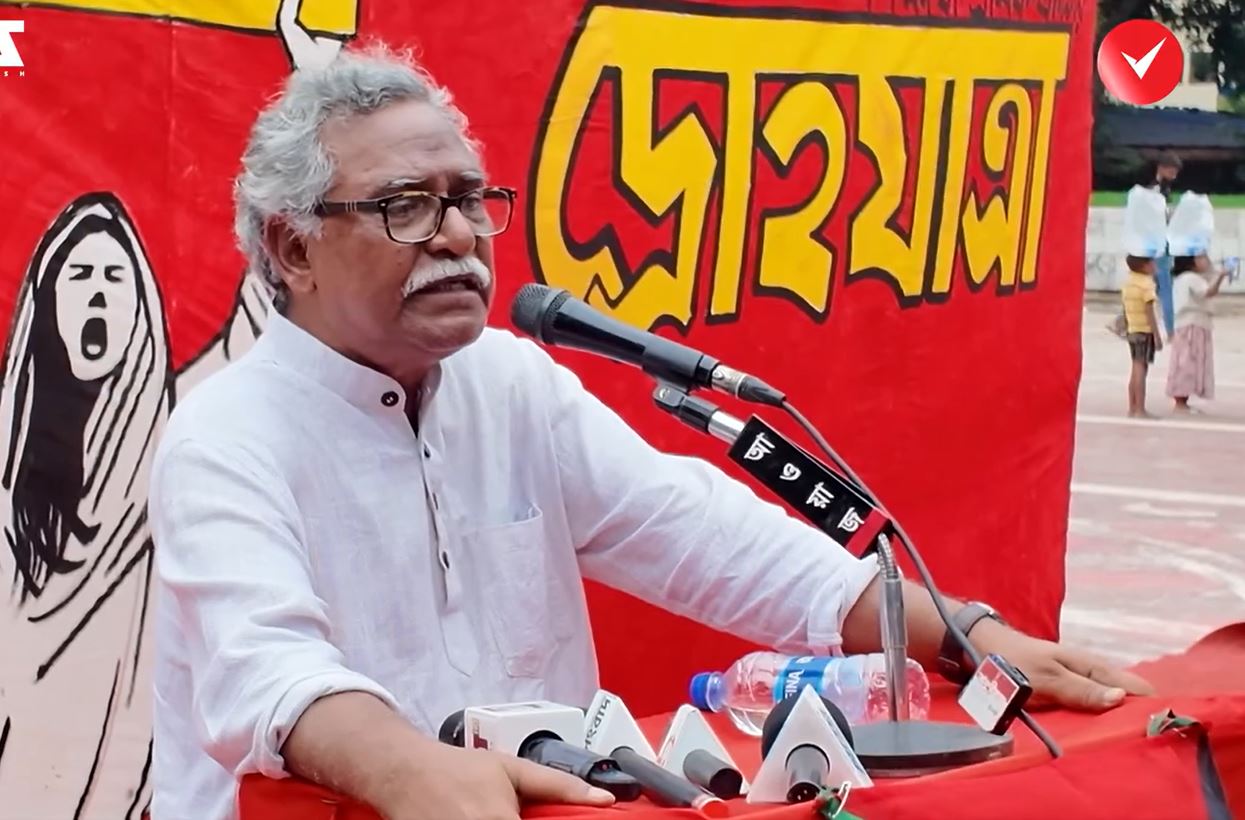Sheikh Hasina, the former prime minister ousted in a popular mass uprising last year, has destroyed the Awami League by fleeing to India, believes economist and professor Anu Muhammad.
In an interview with Times of Bangladesh on the first anniversary of the July Uprising, he said, “The seeds of destruction for the once-historic Awami League were planted long ago from within. And Sheikh Hasina, the autocrat, was the biggest disaster to befall her own party.”
In response to whether the seeds of the party’s demise were sown during the Bangladesh era or earlier, Anu Muhammad said, “The destruction began between 1972 and 1975, during Sheikh Mujibur Rahman’s leadership. As an autocrat, Sheikh Mujib established a one-man rule within the party. Simultaneously, the Awami League became a haven for looters, corrupt officials, and criminals.”
“However, because Sheikh Mujib had immense popularity and influence—being a leader of the 1960s mass movement and the Liberation War—this internal autocracy wasn’t fully exposed during Bangladesh’s early years. Moreover, the Awami League held power for only three years at that time,” he added.
The former professor at Jahangirnagar University further said that but during the last 15 consecutive years in power, Sheikh Hasina became not only an authoritarian ruler but also centralised absolute control within the party. Cabinet ministers couldn’t make independent decisions; the party chairperson’s word was final. There was no practice of internal democracy. In fact, Hasina herself was the main reason behind the Awami League’s greatest downfall.
Analysing the party’s condition, he noted that over 15 years in power, the Awami League transformed into a party of plunderers, extortionists, commission-takers, corrupt officials, and political thugs. Though they spoke of the ideals of the Liberation War, the party ultimately served a privileged elite. Under state patronage, corporate giants like Beximco, Summit, and Bashundhara Group were granted special favours. The Awami League increasingly lost its identity as a political party and began to operate like a business enterprise.
During these 15 years of corruption and looting, there was neither democratic governance nor any free and fair elections. Corruption spread to the grassroots. Central and local positions in organisations like the Chhatra League, Jubo League, Krishok League, and Swechchhasebak League were openly sold for lakhs and crores of taka. These positions were bought as tools for corruption and looting, he added.
When asked about the Awami League’s future as a political party, Anu Muhammad responded, “Under the current leadership, including Sheikh Hasina, the Awami League has no future. If there are any truly patriotic and democracy-minded individuals left in the party, they will never again trust this leadership.”
He said for the indiscriminate killings during the July uprising, the looting and corruption under Hasina’s rule, and their conspiracies against the nation, the Awami League leadership must be held accountable. Only after that—if those not involved in these crimes seek forgiveness from the people and learn from the party’s mistakes—might the Awami League attempt to rebuild. But they can only be reborn as a political force if the public chooses to trust them again.
On reports of Awami League leaders and activists receiving military training under army officers, Anu Muhammad said these may be isolated incidents. Because without a democratic process, the public will not accept any terrorist activity from the Awami League.
Even India, he said, despite being a close ally of the Awami League, may not support such acts. Still, various vested interests may try to use the party to create unrest. The interim government and the public must remain vigilant against such attempts.
Commenting on the fall of the Awami League’s misrule, now known as the “36 July Uprising,” he said, “But this wasn’t merely a 36-day uprising. In truth, it was the culmination of long-standing resistance and protest against Hasina’s prolonged fascist rule.”
Anu Muhammad further explained that after the Awami League’s term expired in 2014, the regime entrenched itself through a farcical election and established autocratic rule. Public resentment grew steadily. Their boundless corruption, looting, profiteering from mega projects, and large-scale capital flight reached extreme levels.
Acting like the true owners of the country, he said, Hasina’s regime clung to power through lies, police brutality, RAB, the Chhatra League, the Swechchhasebak League, and repressive laws like the Digital Security Act. They enforced rule through killings, torture, imprisonment, and harassment—terror extended to the grassroots.
In response, Anu Muhammad, said various movements emerged—opposition to the Rampal power plant, the student-led Safe Roads Movement, protests by left-democratic forces, professional bodies’ resistance, and finally the anti-quota movement. This momentum culminated in the ‘one-point movement’ that ultimately succeeded.


